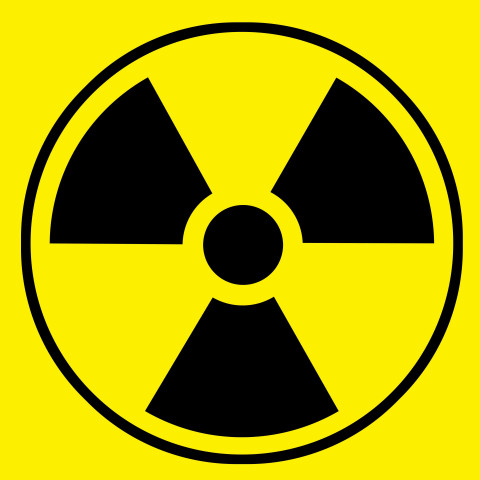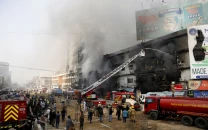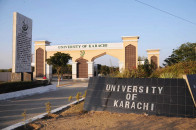Nuclear safety: Radiation leak from K-2, K-3 nuclear plants a far cry, explain experts
A visit was arranged to the construction site and KANUPP plant near Paradise Point beach.

A visit was arranged to the construction site and KANUPP plant near Paradise Point beach. PHOTO:FILE
To address concerns about the China-made nuclear reactors for K-2 and K-3, the Pakistan Atomic Energy Commission (PAEC) held a media workshop on Nuclear Power on Saturday and afterwards arranged a visit for the participants to the construction site and Kanupp plant near Paradise Point beach.

Talking about the evacuation of Karachi in case of a nuclear disaster, PAEC chairperson Dr Ansar Pervaiz called them fabricated stories.
He said the PAEC is expanding its activities and installing large nuclear power plants to meet the energy requirements of the country. “This plant is cheap, reliable and can remain unaffected in every season,” he said, highlighting the success of the running 137-megawatt Kanupp. He also cited the examples of the PAEC nuclear power plants at Chashma, C-1 and C-2, financed by China, which are running since 2000 and 2011 respectively.
About the location of K-2 and K-3, the PAEC chairperson said the site was chosen because it did not lie on the seismic fault lines and is away from the populated areas. He also cited the example of America’s Indian Point Energy Centre located outside New York.
Pervaiz called renewable energy sources as “appetisers” which can be useful but cannot be totally relied on. He said that 80 per cent of the energy used in Europe and America is still generated from nuclear power plants.
A faculty member of the Pakistan Institute of Engineering and Applied Sciences (PIEAS), Dr Ahmad Talat Fatimi, in his presentation on living with radiation chalked out the difference between the facts and myths of radiation. “The fear of radiation is worse than radiation itself.”
He said that the radiation dose which the public is annually exposed to from nuclear power plants is less than that what they get from natural sources of radiations. “The radiation dose a man receives during one flight from Islamabad to New York is greater than two years of radiation dose by living near a nuclear reactor.”
In the 2011 Fukushima Daiichi nuclear accident, he said, not a single death was reported and the World Health Organisation stated that the chances of cancer spreading in the area were negligible. He said that the Chernobyl nuclear power plant reactor is no comparison to the reactors of Kanupp and K-2 and K-3 because they are differently designed. The latter are safer than the former.
Khawaja Ghulam Qasim, a senior manager at the Health Physics Division of the PAEC, said, “For the past 40 years, the KANUPP is running but it has never emitted any radiation so far.”
He said that no accident has ever occurred in the plant in its history. PAEC director engineering Dr Khawar Naveed said that ‘ACP1000’ - a ‘Pressurised Water Reactor’- will be used for the K-2 and K-3, which is a third generation nuclear power reactor. “These are double containment reactors with resistance to external attacks,” he said, adding that the reactor’s self-safety system eliminates chances of release of any fission particles. “The reactor works in a close cycle system. The water which cools the pressure vessel remains in the plant and seawater is only used to cool the water used in the plant. They never get mixed so there are no chances of contaminated water going into the sea.”
PAEC Applied System Analysis Division director Ghulam Rasul Athar said they are producing the cheapest electricity in the country after hydro power at Rs7 kilowatt per hour and their three operational plants are generating five per cent of the total electricity generated in the country. “We are planning to generate 8800-megawatt nuclear energy by 2030,” he said.
Published in The Express Tribune, February 17th, 2014.








1733130350-0/Untitled-design-(76)1733130350-0-208x130.webp)









COMMENTS
Comments are moderated and generally will be posted if they are on-topic and not abusive.
For more information, please see our Comments FAQ